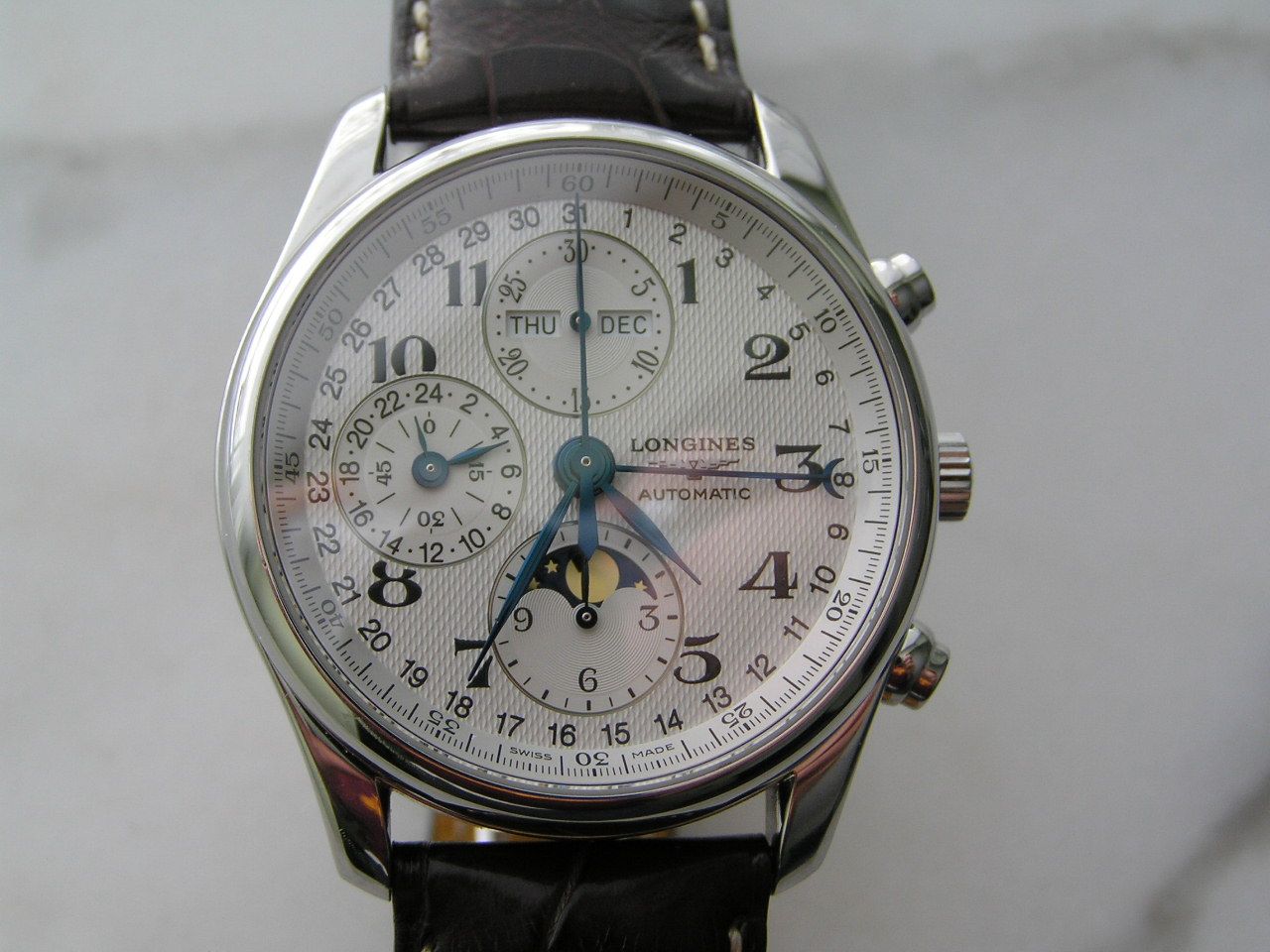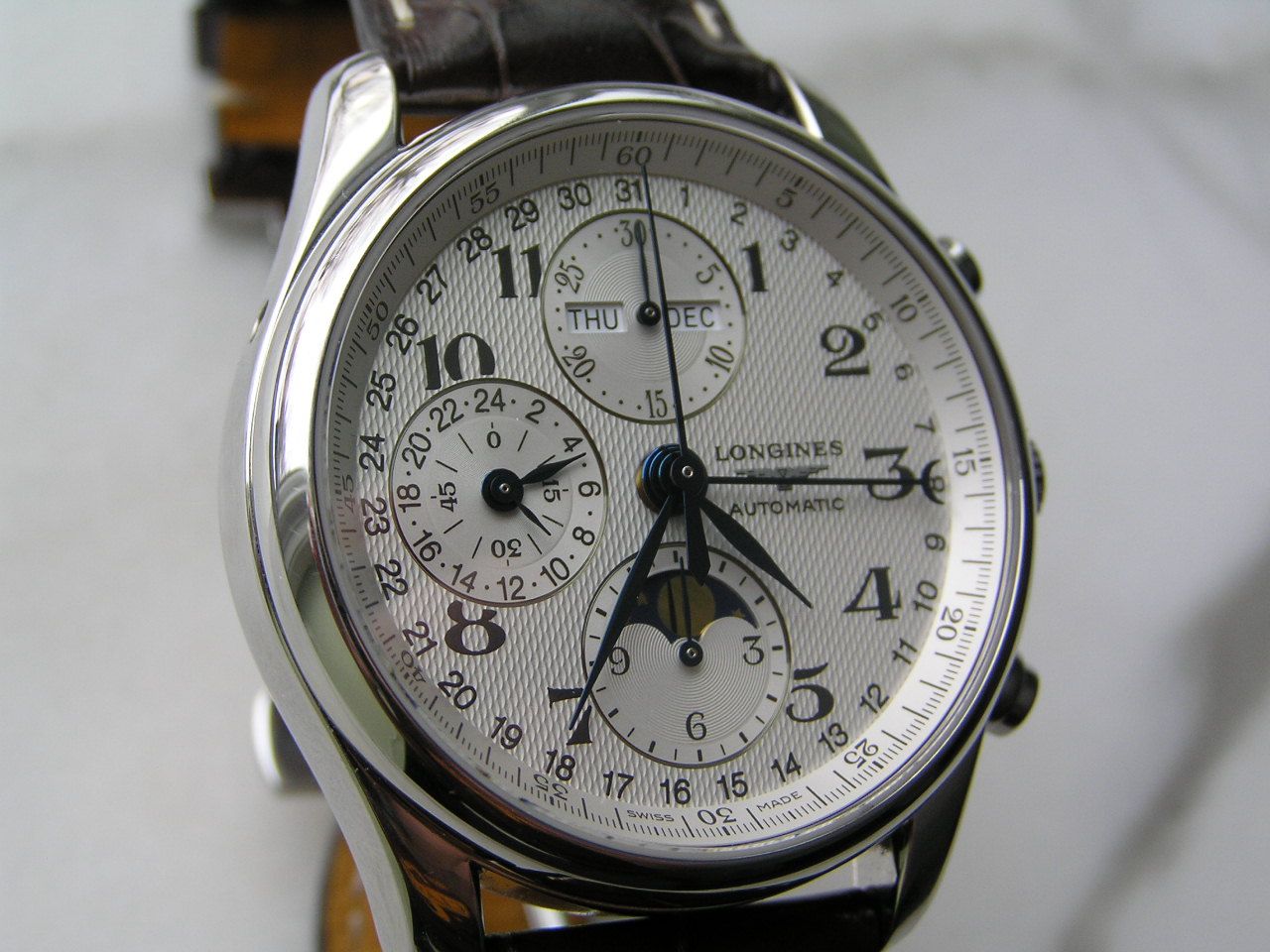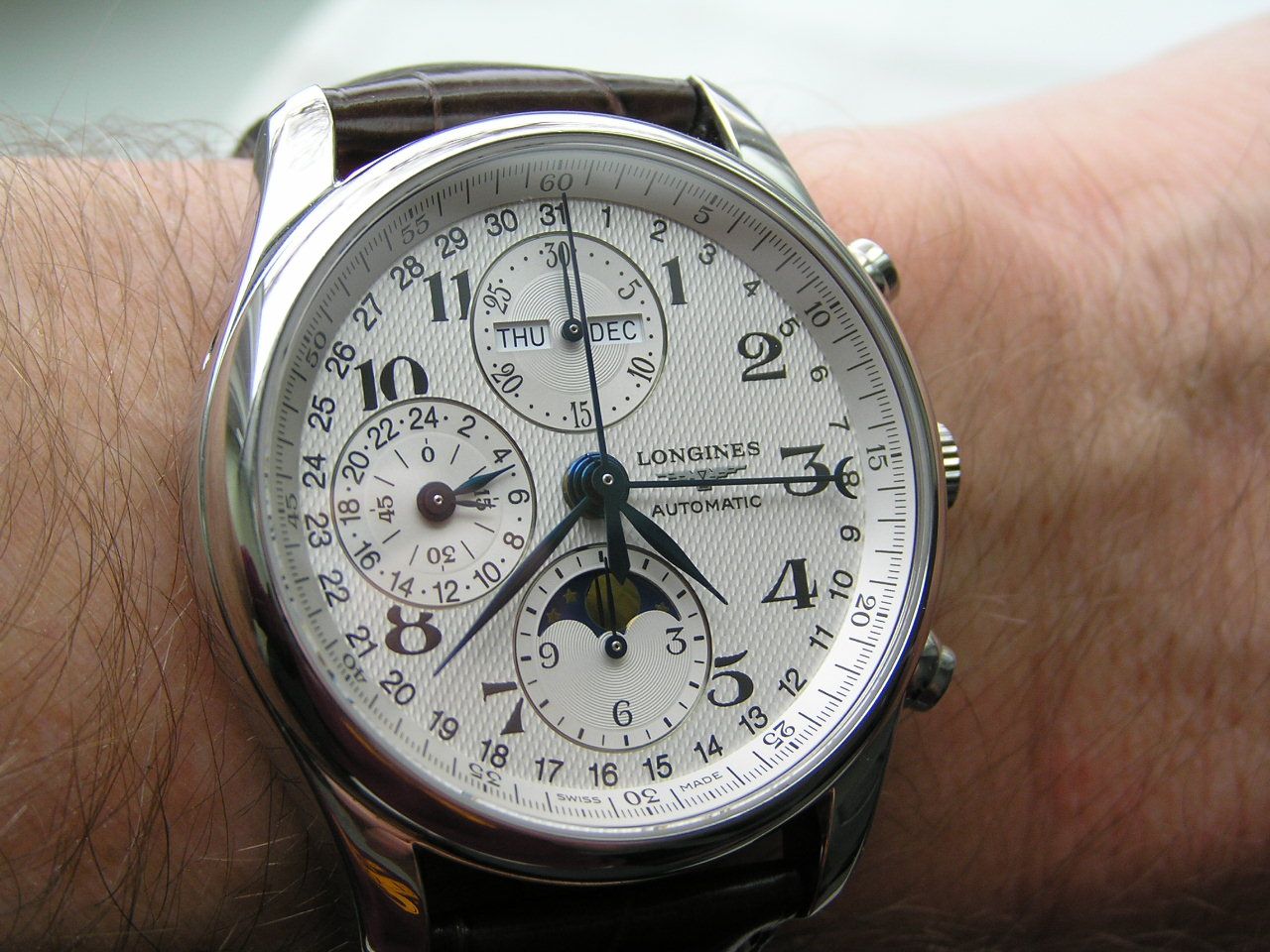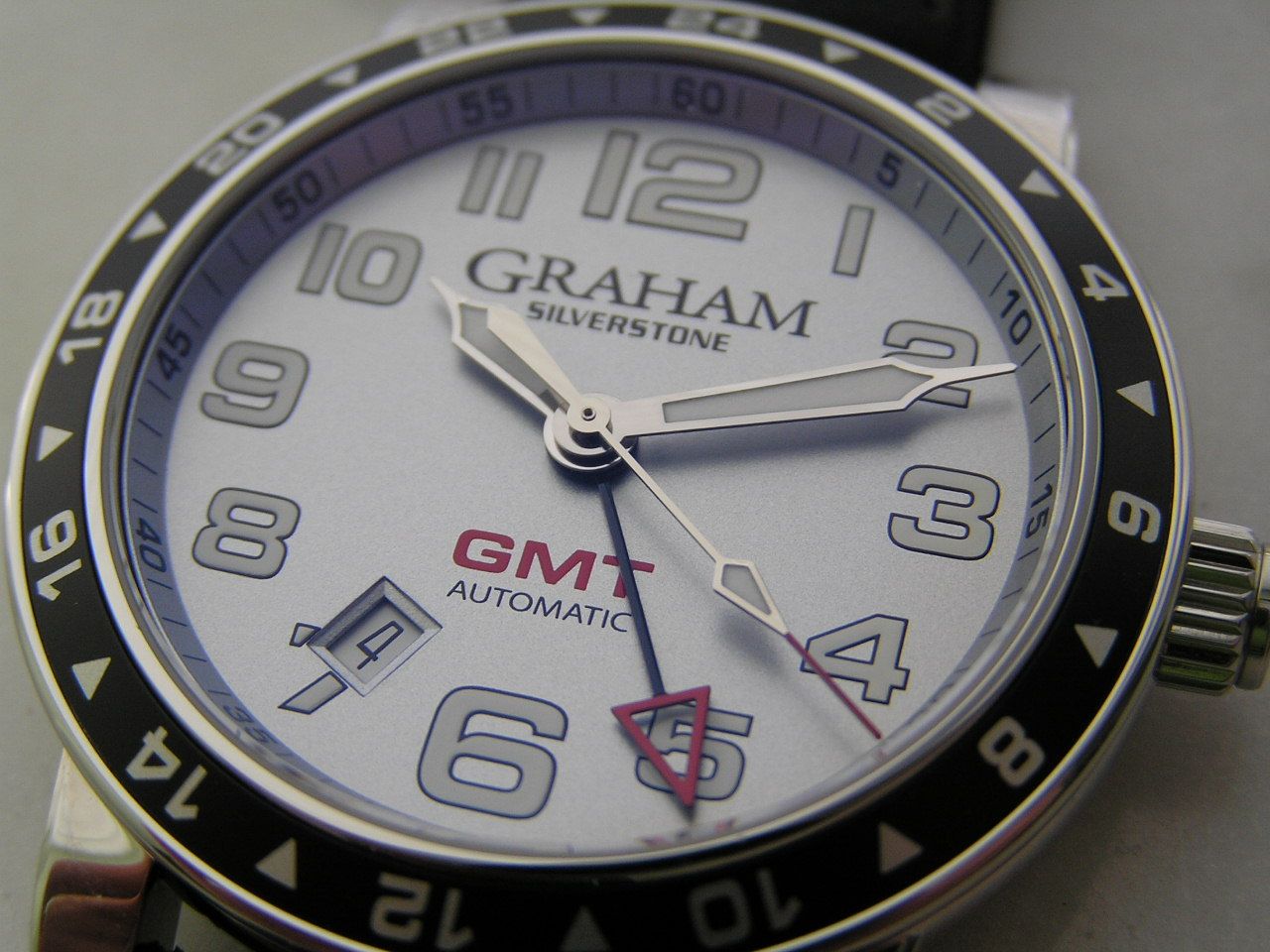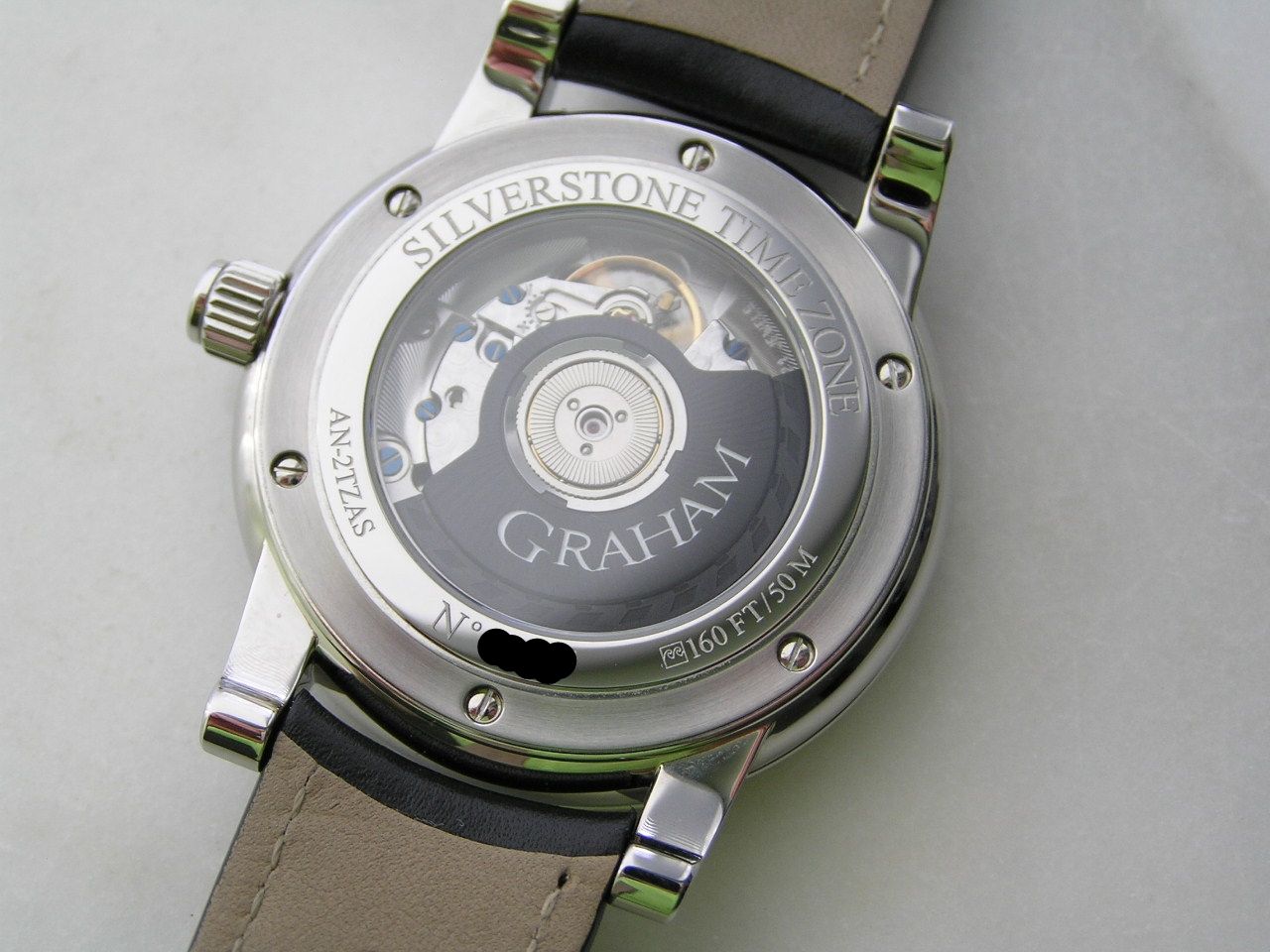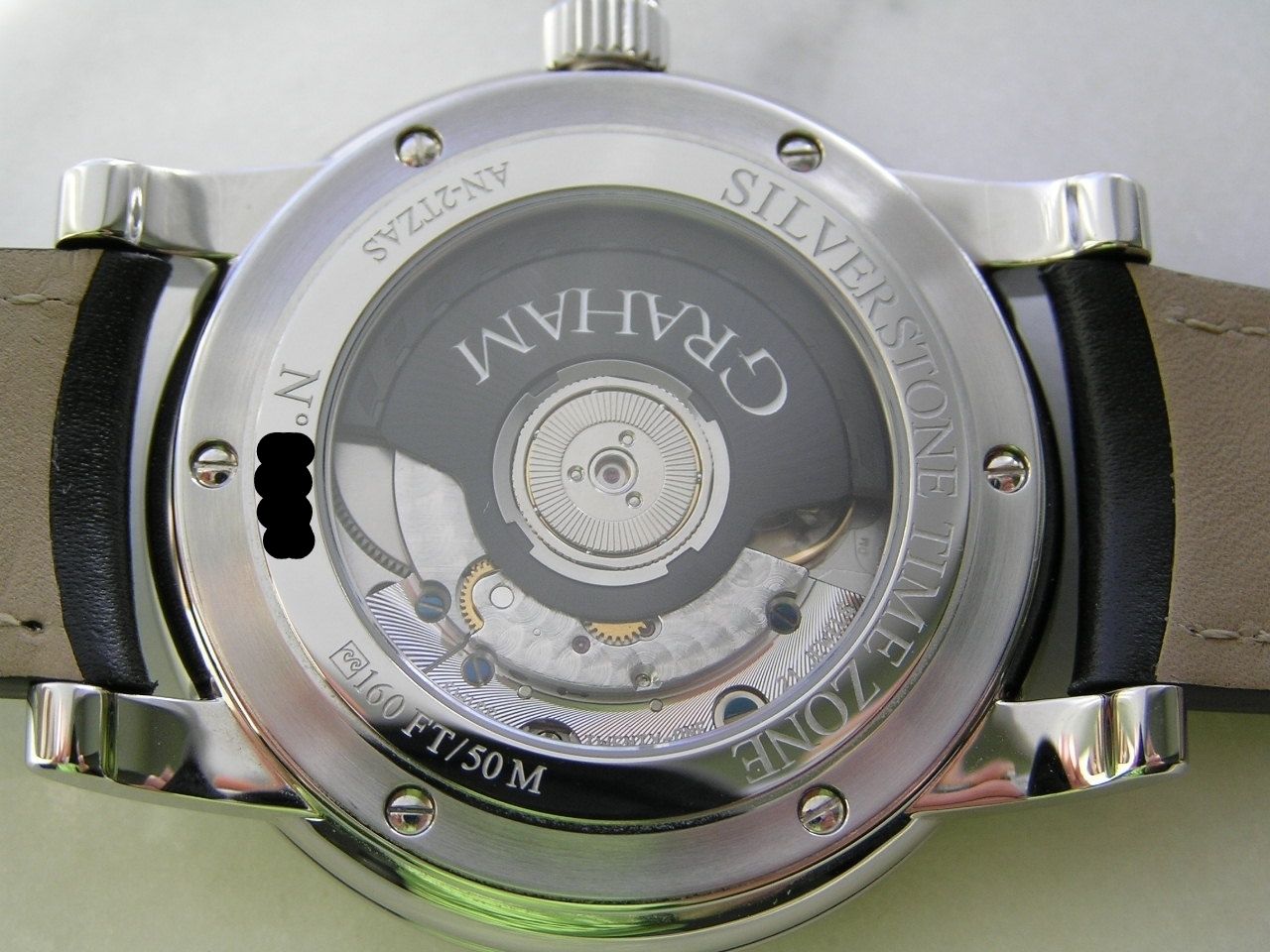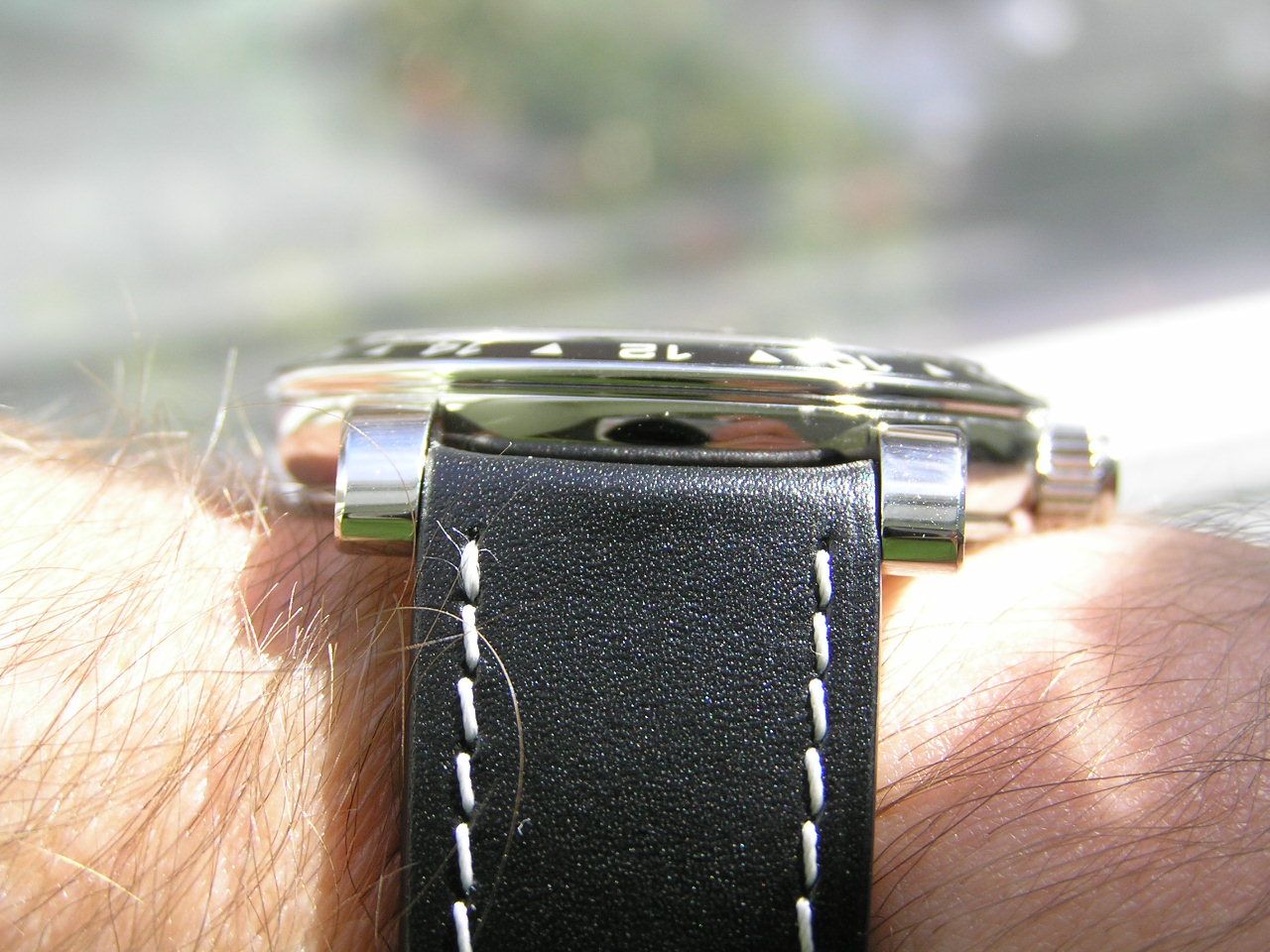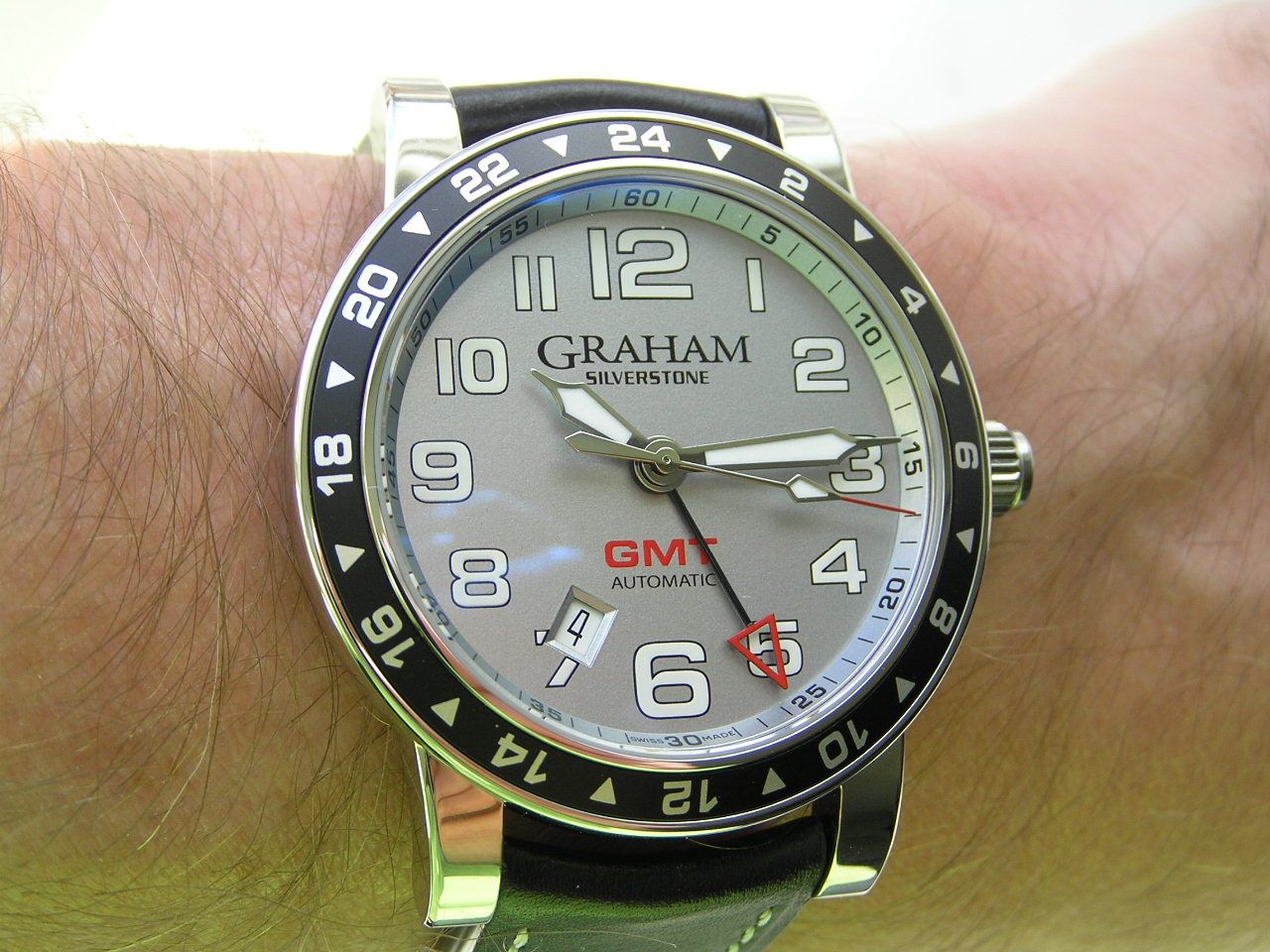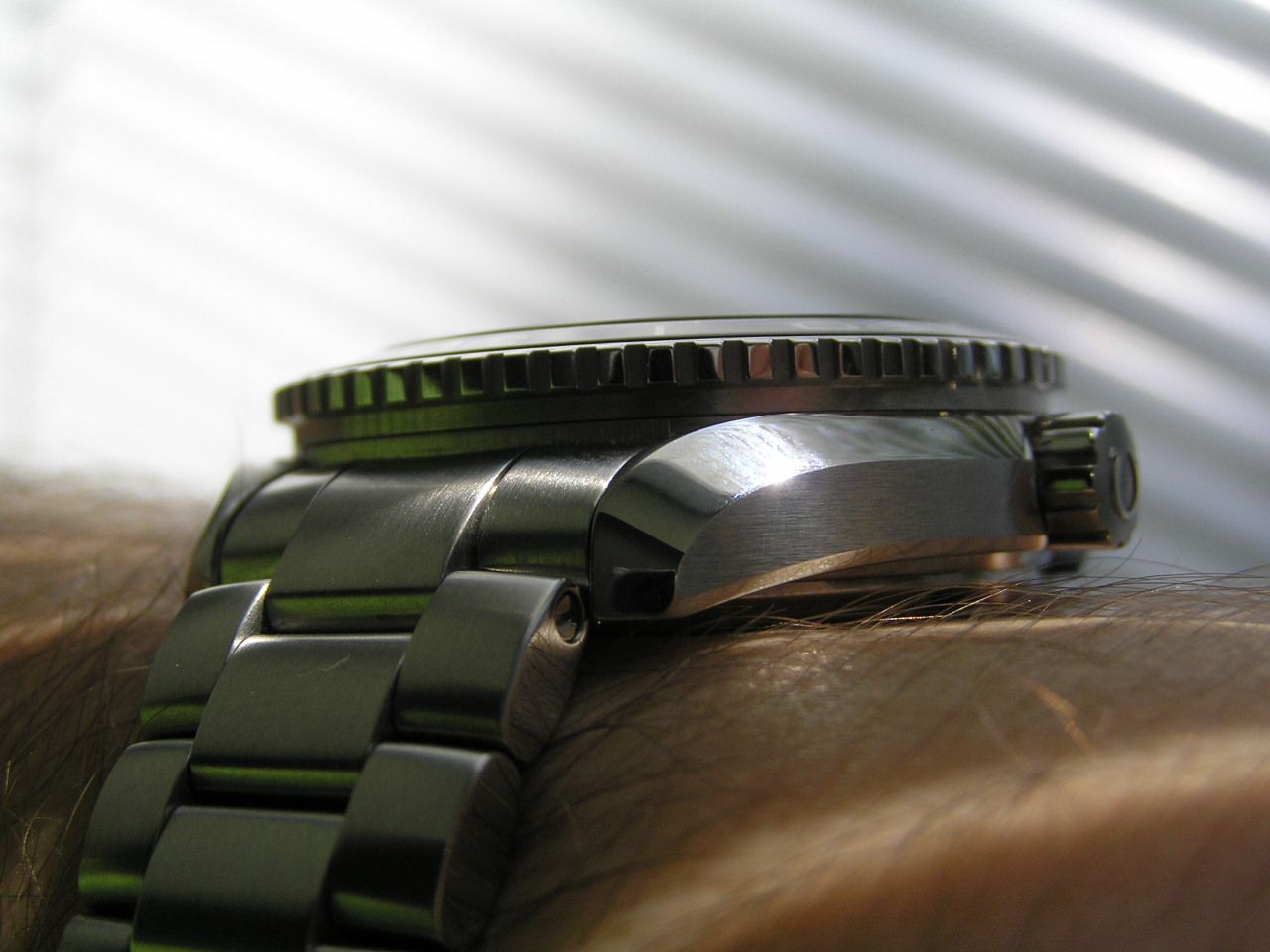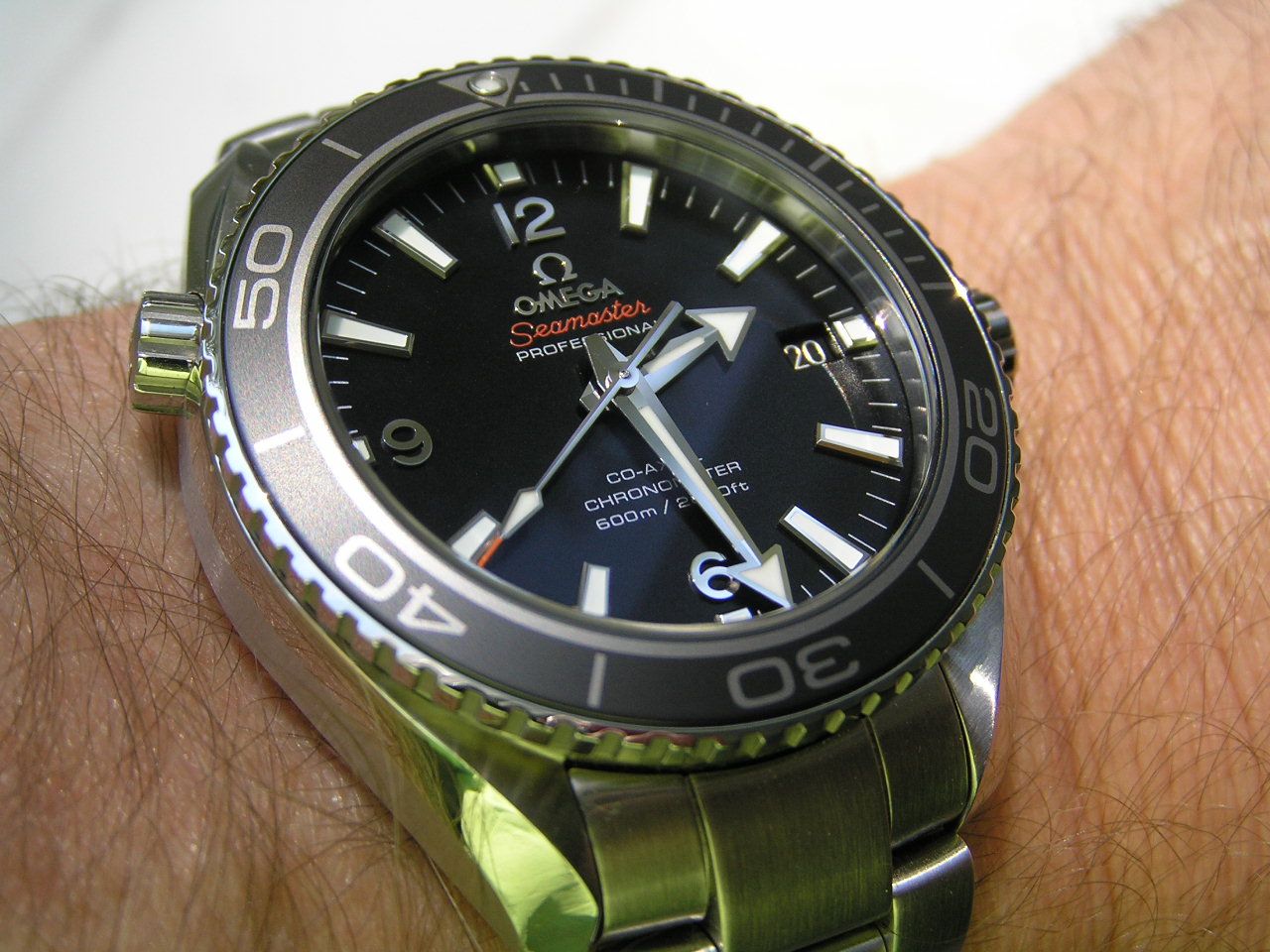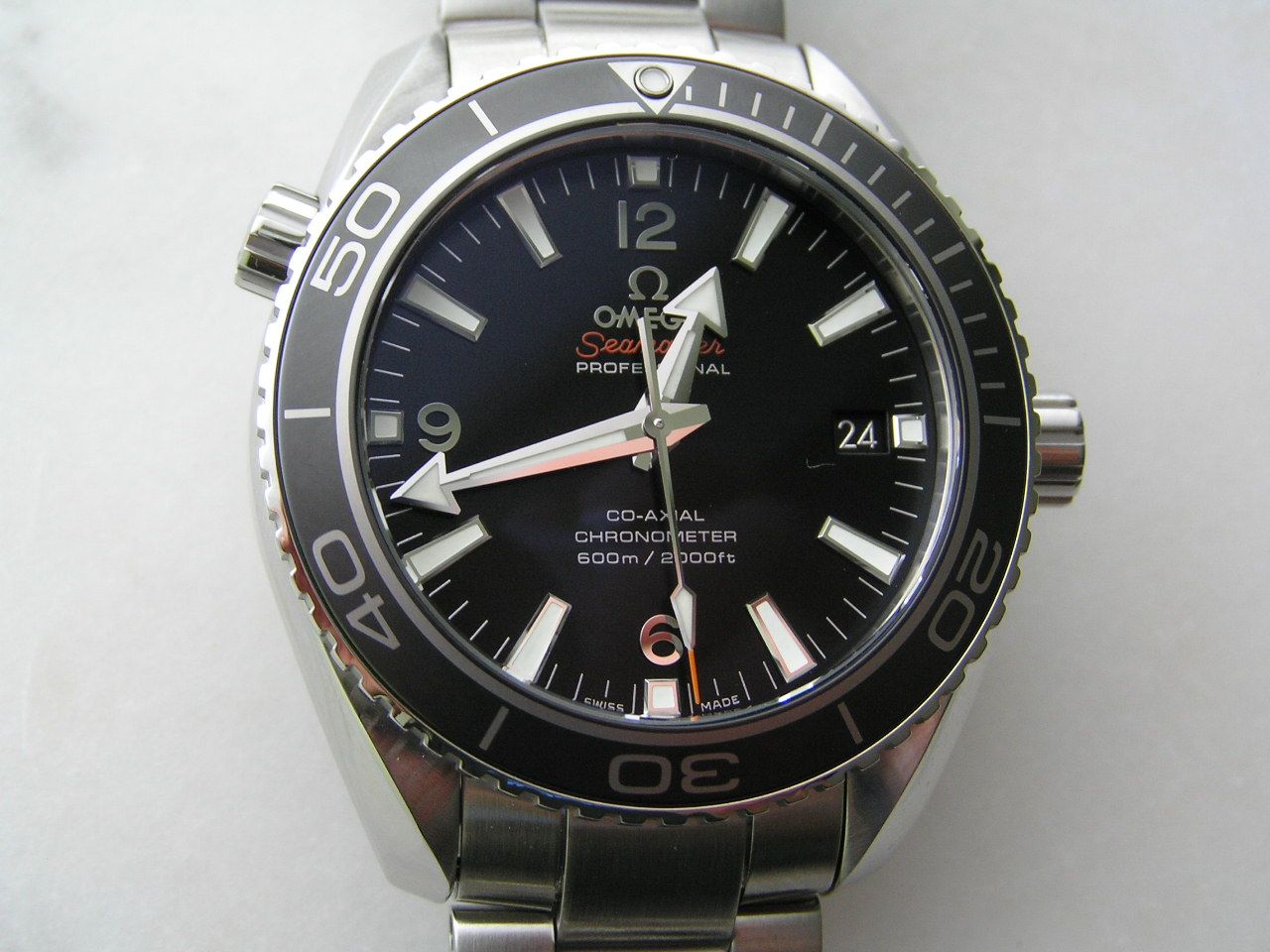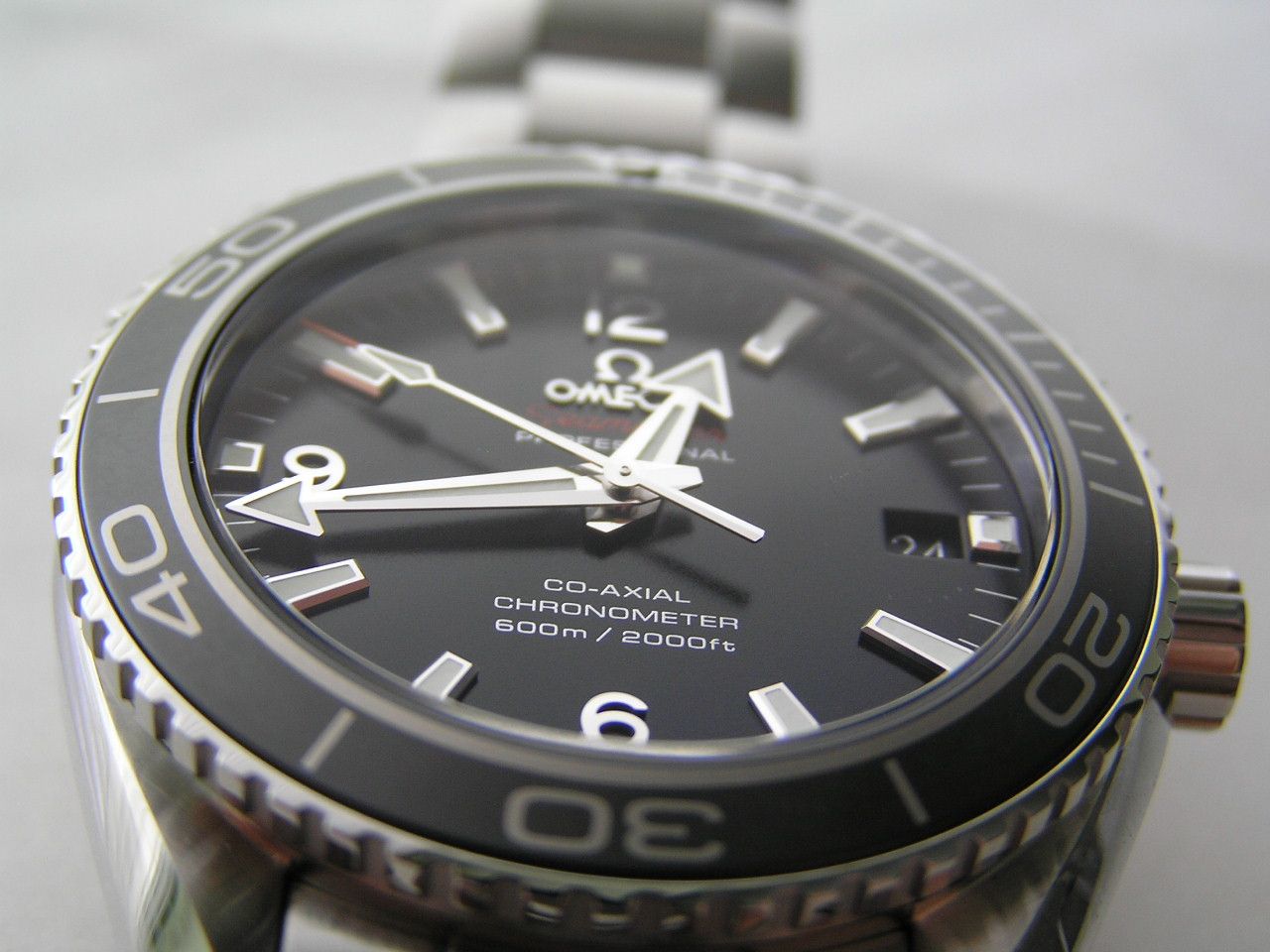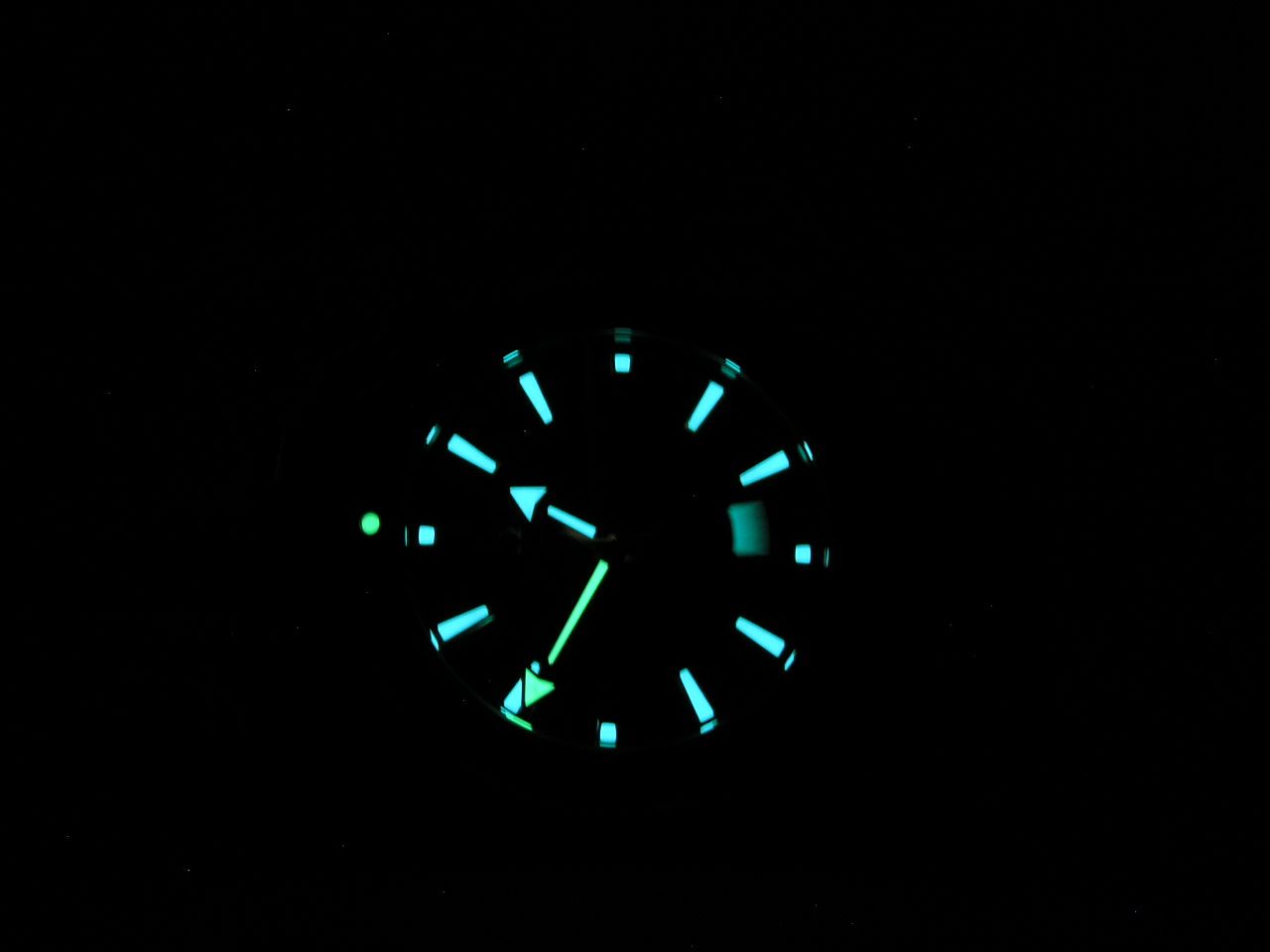Model # L2.673.4.78.3
Brand/Model: Longines Master
Collection
Movement: Swiss automatic
Material: stainless steel case,
alligator strap
Complications: month/day/date
display, 24 hour indicator, chronograph timing in one-second increments up to
12 hours, moonphase
Price: MSRP: $3,050 USD
Plenty of photos follow the review.
Click on the pictures to enlarge.
Regular readers of
this blog will know that I am not a ‘fancy watch’ kind of guy. While I can certainly appreciate dressier
watches, I usually find that if I buy a dress watch, I usually end up wearing
it very infrequently. But I do think
that any serious watch collector needs at least one or two dress-type watches
in their collection and for me, this Longines Master Collection triple
date/moonphase/chronograph fills that ‘dress’ spot in my collection.
I’ve always been
attracted to the complication of a triple date watch (a watch that displays the
month, day and date). There are further
variations of this style, including a year display and perpetual complications
that are very expensive, but for me, the triple date complication is plenty. Add to this a real moonphase display and a
12-hour chronograph, wrap it up in a 40mm case and make it look really classy
and you have the Longines Master Collection timepiece being reviewed here.
Longines makes
quite a few variations within their Master Collection, but all of the watches
have a dressier bent to them, with bracelet, strap and gold models all
available, with varying degrees of complexity.
Longines makes two sizes of the watch I’m reviewing here, the 40mm
version I have as well as a 42mm model.
The dial layout, functions, etc. are exactly the same between the two
sizes.
For brevity’s sake
and ease of typing, I will abbreviate the Longines Master Collection triple
date/moonphase/chronograph as ‘TDMC’ for the remainder of this review.
The Longines TDMC
begins with a highly polished stainless steel case devoid of any complex angles
or cuts. The case measures 40mm without
the signed non-screwdown crown; 42.3mm with the crown included. A polished rounded bezel is part of the case
along with smooth polished chronograph pushers.
Lug width is 21mm, case thickness is 14.6mm.
The caseback is a
display type, with the sapphire crystal exposing the nicely decorated Longines
Cal. L678 automatic movement, replete with a beautifully rendered and signed
rotor. The caseback is a ‘pressure
fitted’ type, which is a fancy way of saying it snaps on. I guess a fancy watch needs some fancy
superlatives.
The Longines TDMC
is factory rated for a very modest 30 meters of water resistance, which is
fine, because I cannot see anyone swimming or even showering with this fine
watch.
Where the Longines
TDMC really shines is with the highly detailed, complex but not unusable
dial. The silver ‘barleycorn’ dial is
finely textured and is almost a silver-white in color. The finely crafted semi-sword style hour and minute
hands are blued steel and they look terrific against the texturing of the
dial. The long central seconds hand is
the seconds hand for the chronograph.
The black painted
arabics are presented in the perfect font and despite this watch having so many
complications, the dial remains easy to read and easy to use. Minimal dial printing also helps greatly in
making this watch easier to read. At the
three position, there are the words ‘Longines’ and ‘Automatic’ with the
Longines wing logo between the two words.
Subtle and unobtrusive.
A dished chapter
ring serves as the minute track for the watch, with arabics every five minutes
and hash marks in-between those markers.
Just inside the chapter ring is the circular date ring, with its numbers
painted on the dial. A half-moon central
hand circles clockwise around the dial semi-enclosing or almost underlining the
current date. It works well and is easy
to see.
The subdial at the
12 position is the 30-minute totalizer for the chronograph. This subdial also contains the rectangular windows
for the day (on the left) and month (on the right), both centered in the
subdial. The wheels for the day and
month are black on white and centered perfectly in their respective windows.
The subdial at the
9 position has two hands, one being the watch’s seconds hand and the other,
longer hand, being the 24-hour or a.m./p.m. indicator. The seconds hand is sometimes hard to see
running because it is so small; I almost think Longines could have made the
seconds hand the longer of the two hands in this subdial. A small quibble, but something to take note
of regardless.
I always appreciate
a watch that has a 24-hour indicator, it makes it easier to set the date
because you know where in the 24-hour cycle the movement is and also because
it’s just a nice feature to have.
The subdial at 6 is
the chronograph 12-hour totalizer, with the upper half of this subdial cut-out
to reveal the moonphase function, which is designed in fair detail in blue and
gold. I’ve never really used the
moonphase on this watch because I don’t wear it everyday. It is a true moonphase and the instructions
tell you how to set the dial so the phase will display accurately. It’s a cool function, but one I don’t bother
with setting when I wear this watch.
All the subdial
hands are also blued steel. There is
also no luminous on this watch, it does not glow in the dark, but with so many
complications, it’s really not the type of watch you need to see in the dark
anyway. But having just the hour and minute
hands luminous would add practicality to this piece.
Finally, covering
this most interesting of dials is a slightly domed sapphire crystal.
One thing that
always steered me away from complicated watches like this Longines are the
degree of difficulty in setting the watch.
Some triple dates have pushers that set each complication and make the
watch overly fussy or ungainly in appearance.
Well, Longines nailed the setting problem and I am happy to say this
Longines TDMC is as easy to set as any other watch in my collection.
The majority of the
settings are controlled through the crown.
In the closed position, the crown is used to manually wind the automatic
movement if you choose to do so. The crown
is rather small, so it is a bit difficult to wind, but I will give Longines a
pass here because a dressy watch like this would not look right if the crown
was larger.
In the first click
position, the crown when turned clockwise (away from you) adjusts the moonphase
indicator. When the crown is turned in
the counterclockwise (towards you) position, the date hand is changed and when
it reaches the end of the month (31), the month indicator also changes to the
next month.
In the second click
position, the crown turns the hour and minute hands for timesetting.
The day display is
changed via the flush-mounted pusher at the 10 position on the upper left side
of the case. It’s best to use a rubber
or plastic pointed tool to activate this pusher, so you don’t risk damaging the
polished finish on the case.
Inside the Longines
TDMC is the Longines Caliber L678 automatic movement, running in 25 jewels at
28,800 bph. This movement is a base ETA
Valjoux 7751, so it’s tried and true and runs strong. In my testing, the Longines TDMC kept time at
+4/24 hours and ran a fine 52.5 hours on a full wind. The watch hacks and can be manually
wound. All the complications work
flawlessly, from the calendar and moonphase setting to the functioning of the
chronograph (start/stop/reset are all good).
The movement is
wonderfully decorated, with a variety of Geneva stripes, perlage and
high-polish parts all visible through the display back.
Also, I wanted to
mention that there are other brands of high-end watches that feature this exact
same movement, complication set and dial layout which cost considerably more
than this model. The fact that this
Longines can be had at a lower price with the same features as these other
brands is a strong reason to consider this watch if you’re looking at the
triple date/moonphase/chronograph complication.
The Longines TDMC
is available in both bracelet and strap versions. I think this watch looks classier on the
strap, with is a genuine alligator strap in a medium brown with white contrast
stitching. It’s moderately padded,
fairly soft and flexible and feels good on the wrist.
The strap measures
21mm at the lugs and tapers to 17.8mm at the polished and signed triple safety
folding clasp. Two keepers are included,
one fixed and one floating.
The clasp is a
pushbutton release butterfly style with a nicely machined deployant. Longines even includes a separate manual with
the watch explaining how the clasp works and adjusts. It’s a bit over the top, as there really is
no secret to adjusting or using the clasp.
I will say that at
least for me, the pushbuttons tend to dig into the bottom of my wrist a bit
while wearing, which is a somewhat odd, since I do not have the strap adjusted
on the tight side.
Presentation is
standard Longines, with a cream colored outer box and a polished inner box with
separate compartment for the documentation.
It’s a fine presentation that doesn’t need any improvement.
If you’re wanting a
triple date, moonphase and/or chronograph watch that’s on the dressy side, you
should definitely take a good look at the Longines TDMC. It’s a fine watch that has the look and the
features to occupy a coveted position in your collection without breaking the
bank and you’ll be ready for your next dinner party or corporate event.
Pros: complicated, highly decorated reliable
movement, great classy looks, strong value, useful complications
Cons: crown too small to easily manual wind the
watch, no lume, snap-on caseback
Verdict: a real looker, the Longines Master
Collection triple date/moonphase/chronograph represents a superb watch that’s
loaded with features at a price that’s hard to beat. Stroll into your next black-tie event with
this baby on your wrist and you’ll play the part with panache.
Thanks for reading
and enjoy the pics.
Excelsior!
-Marc


